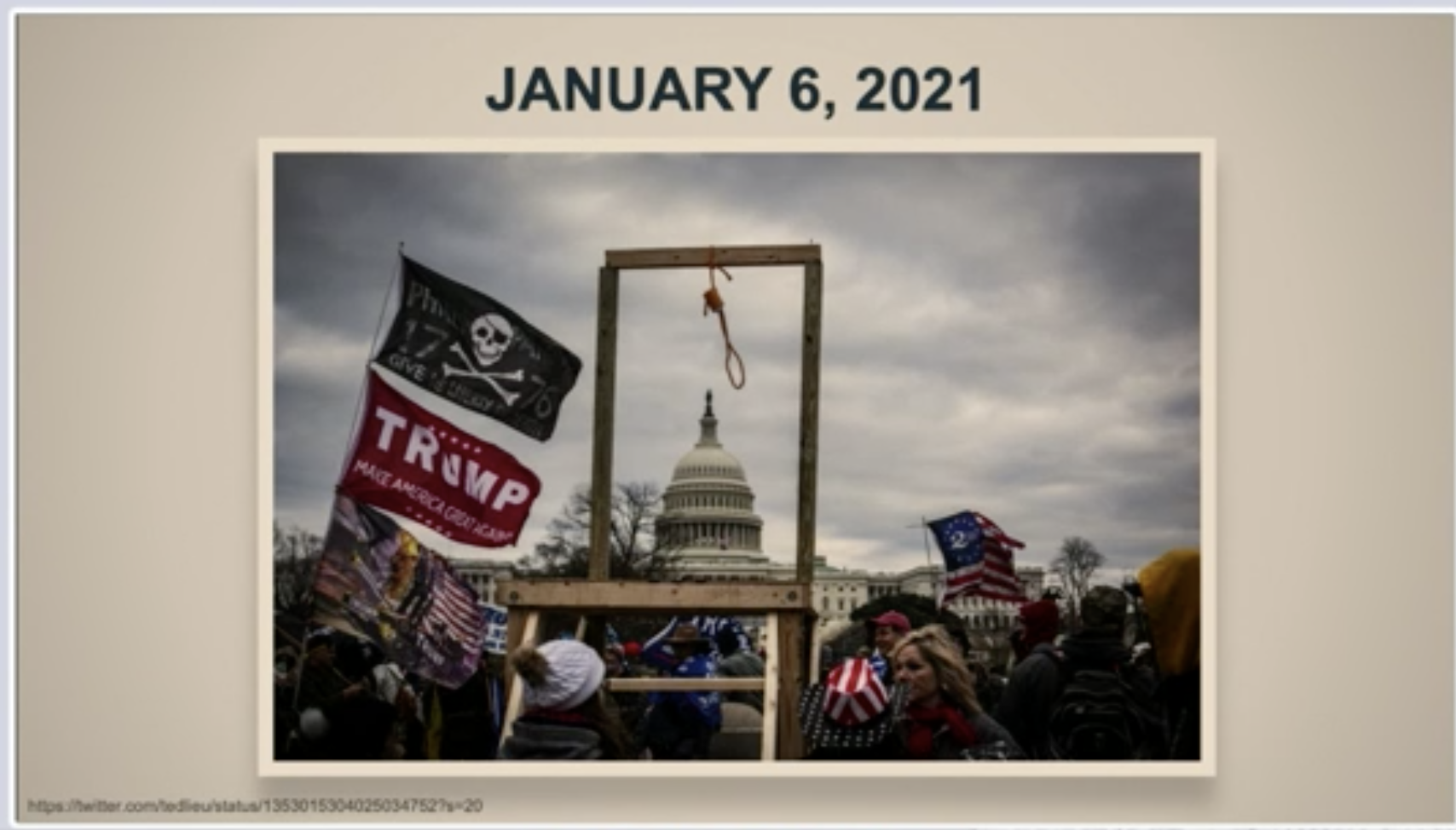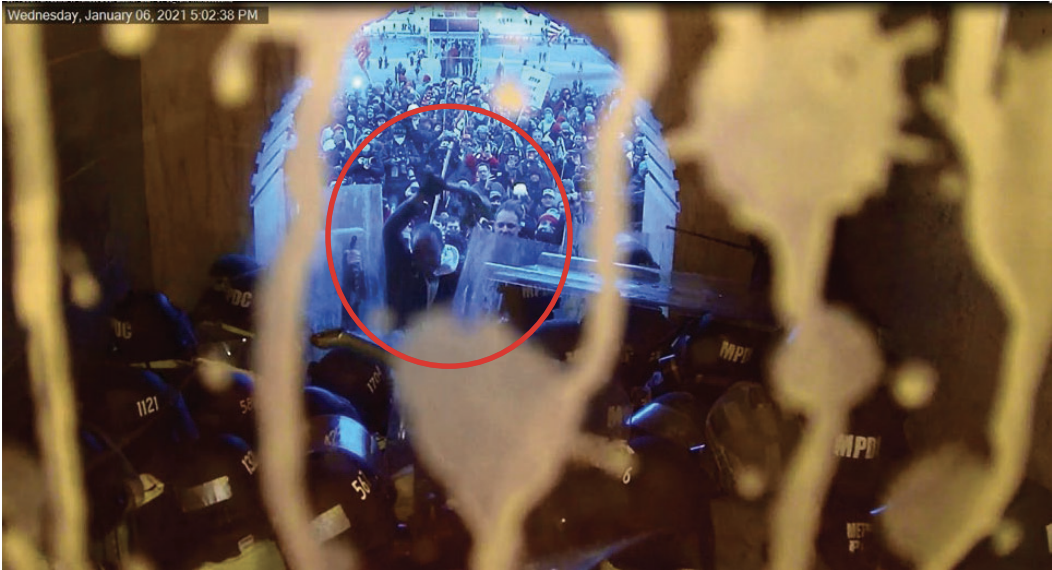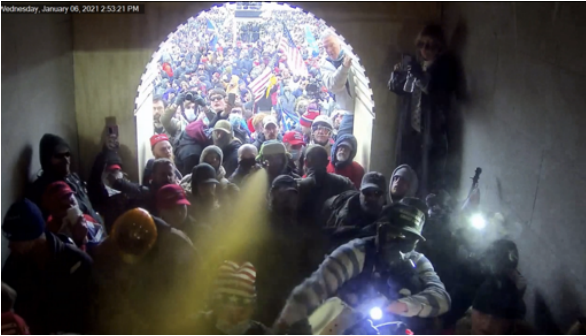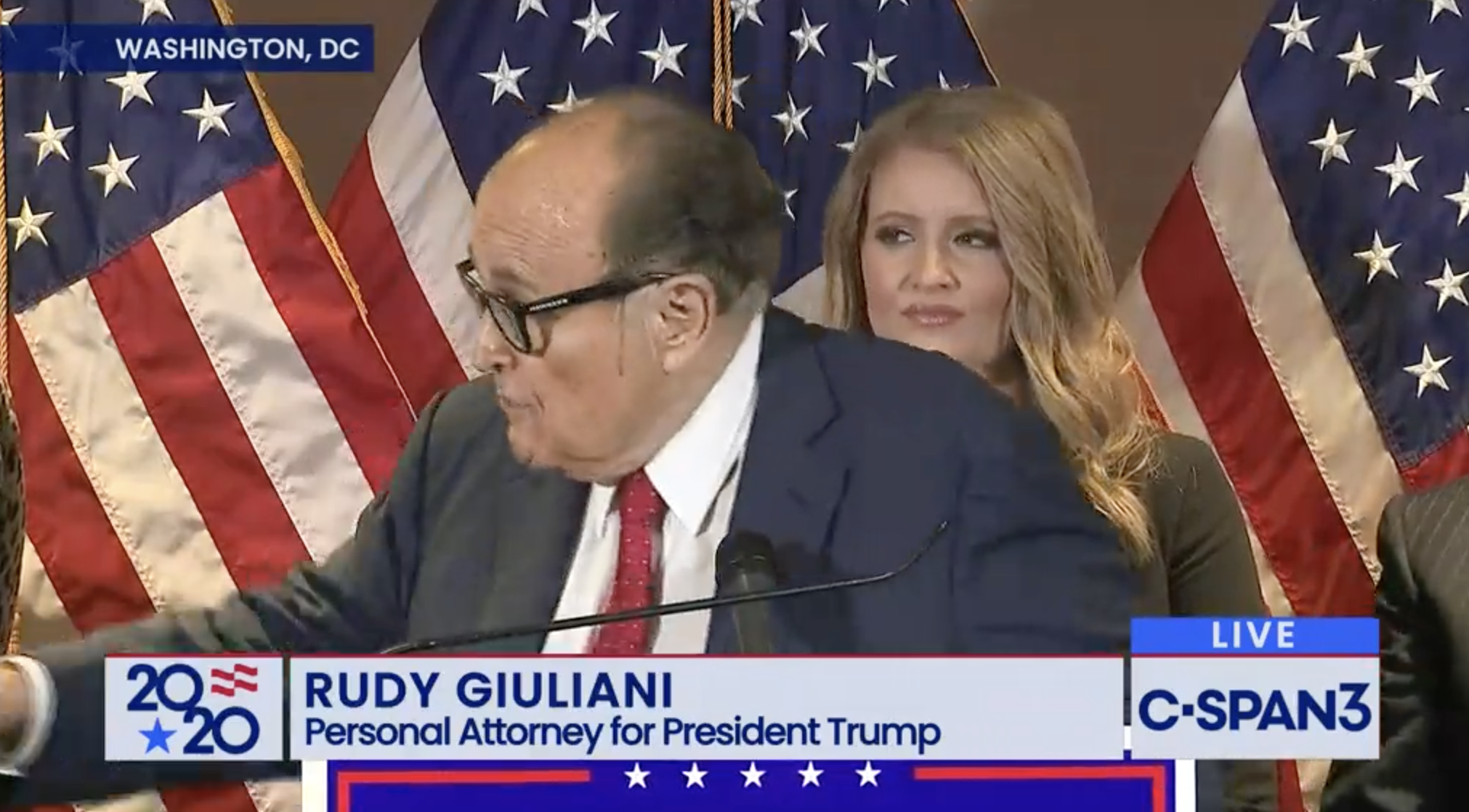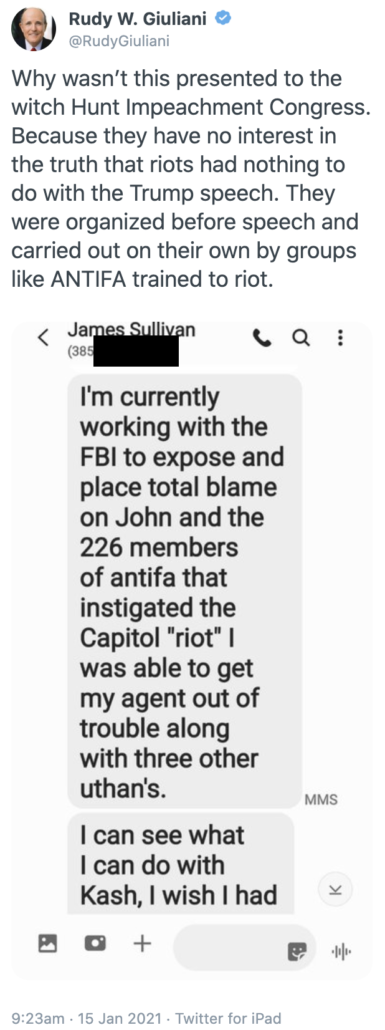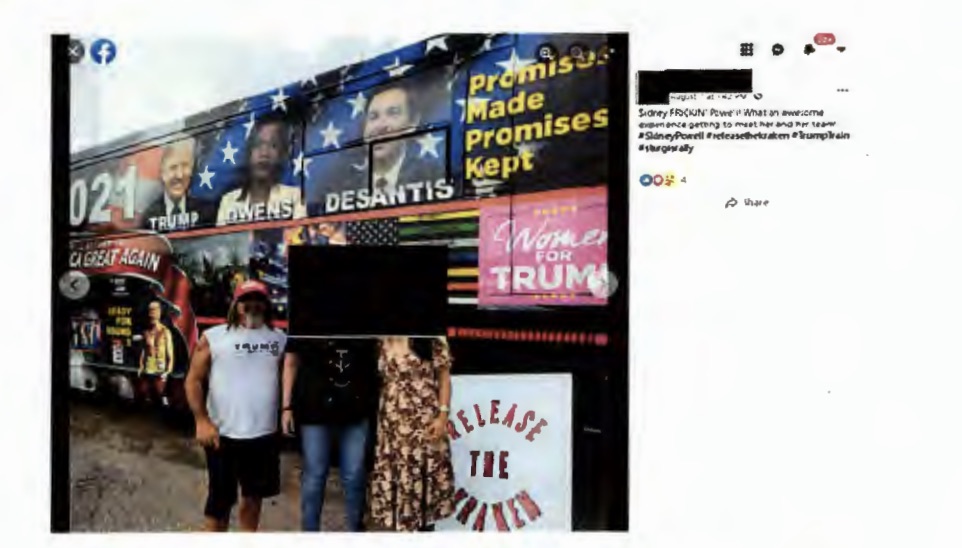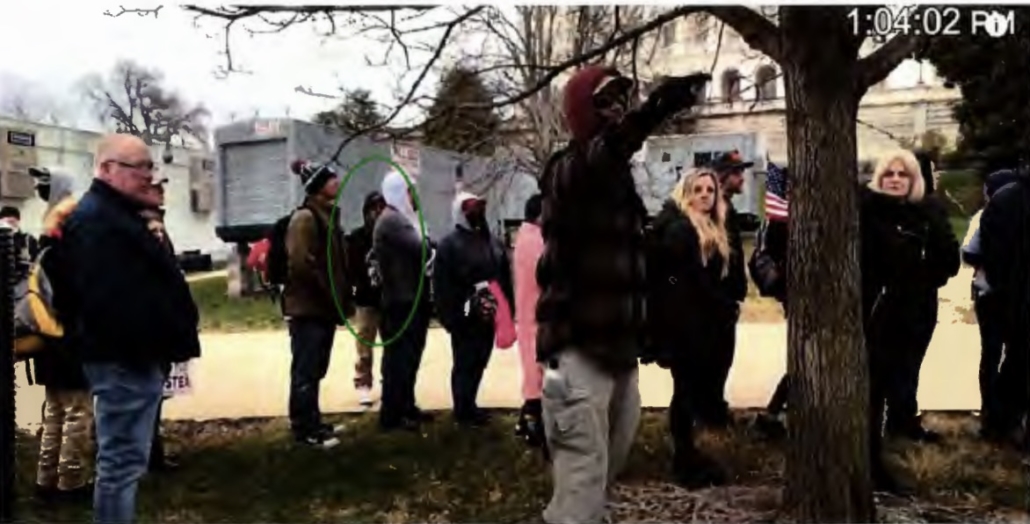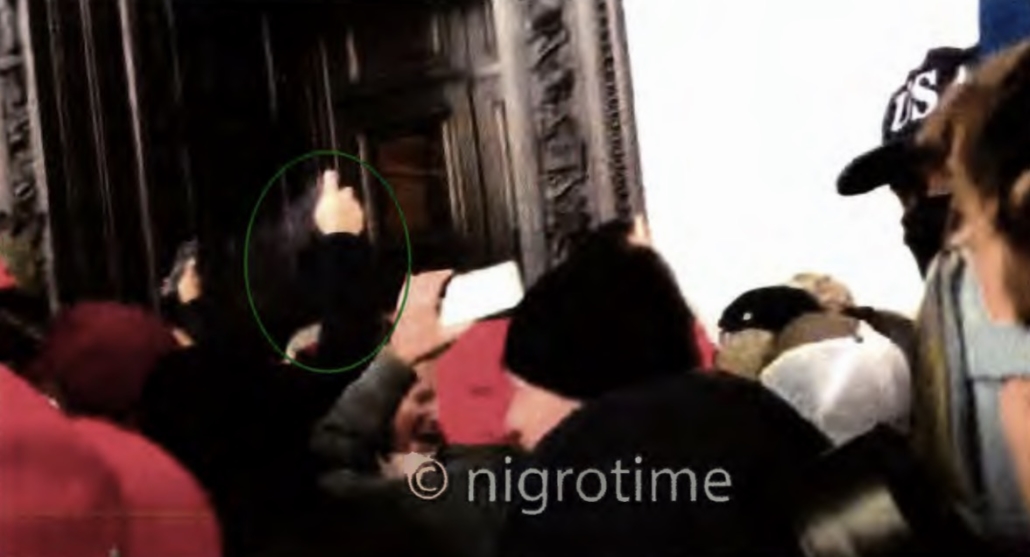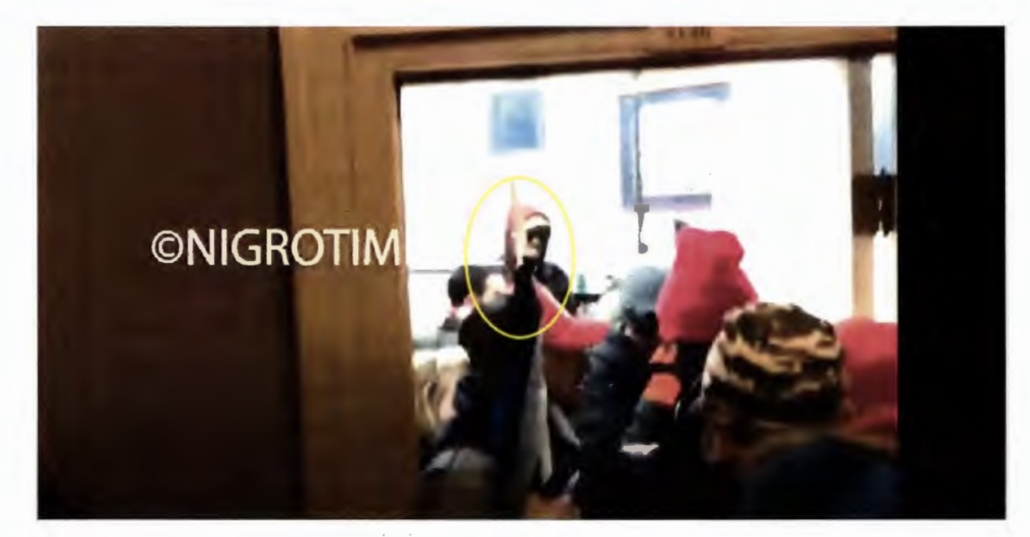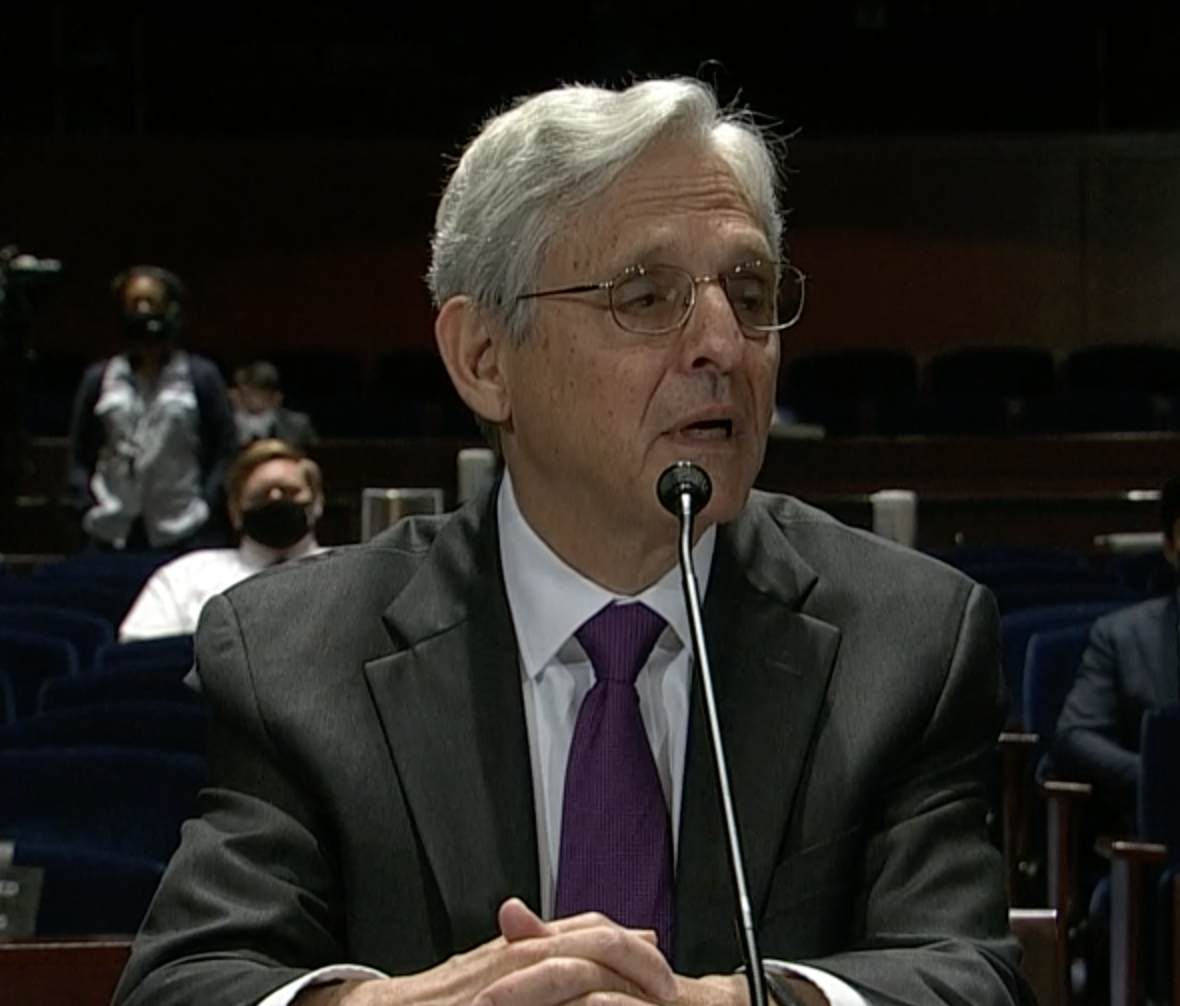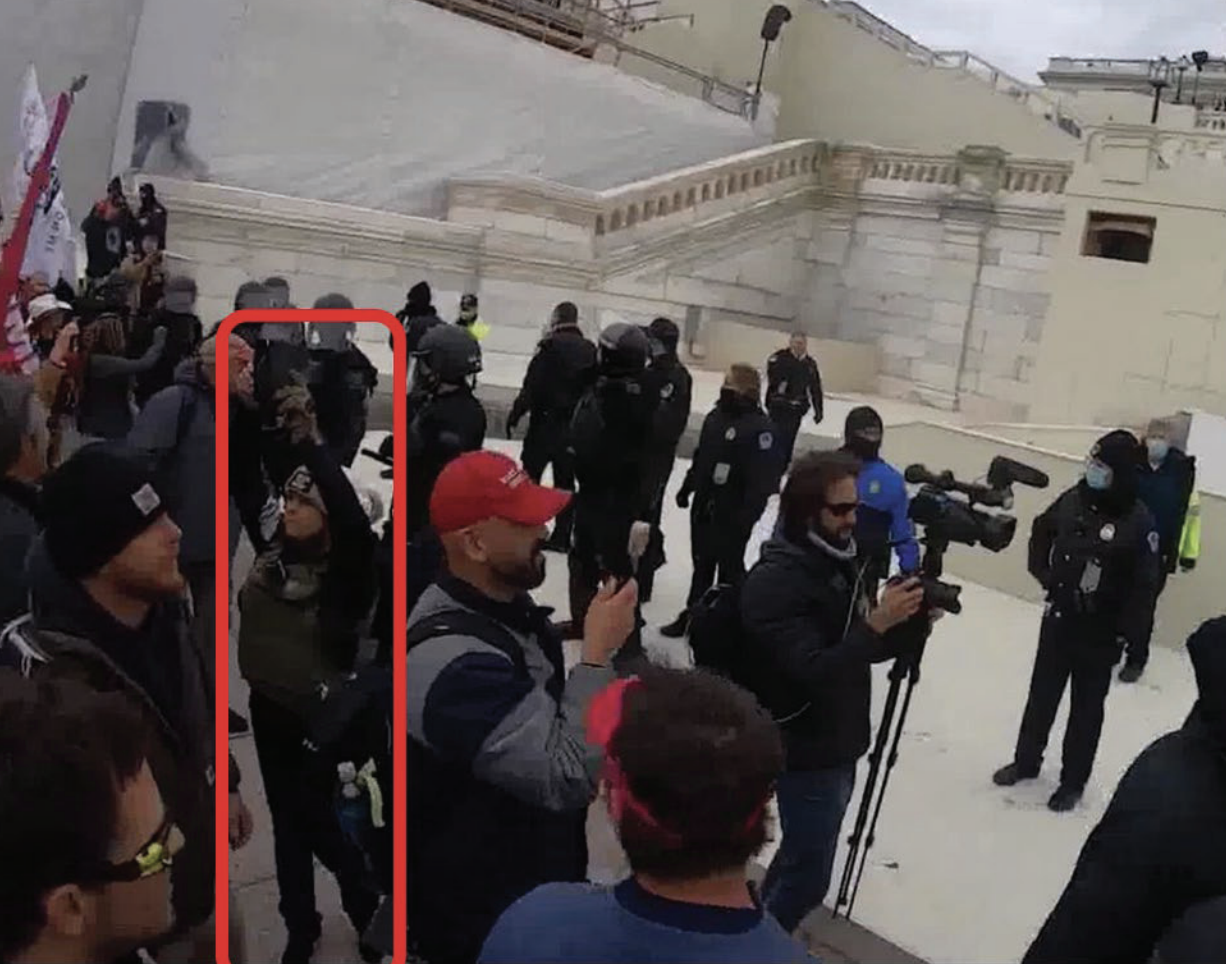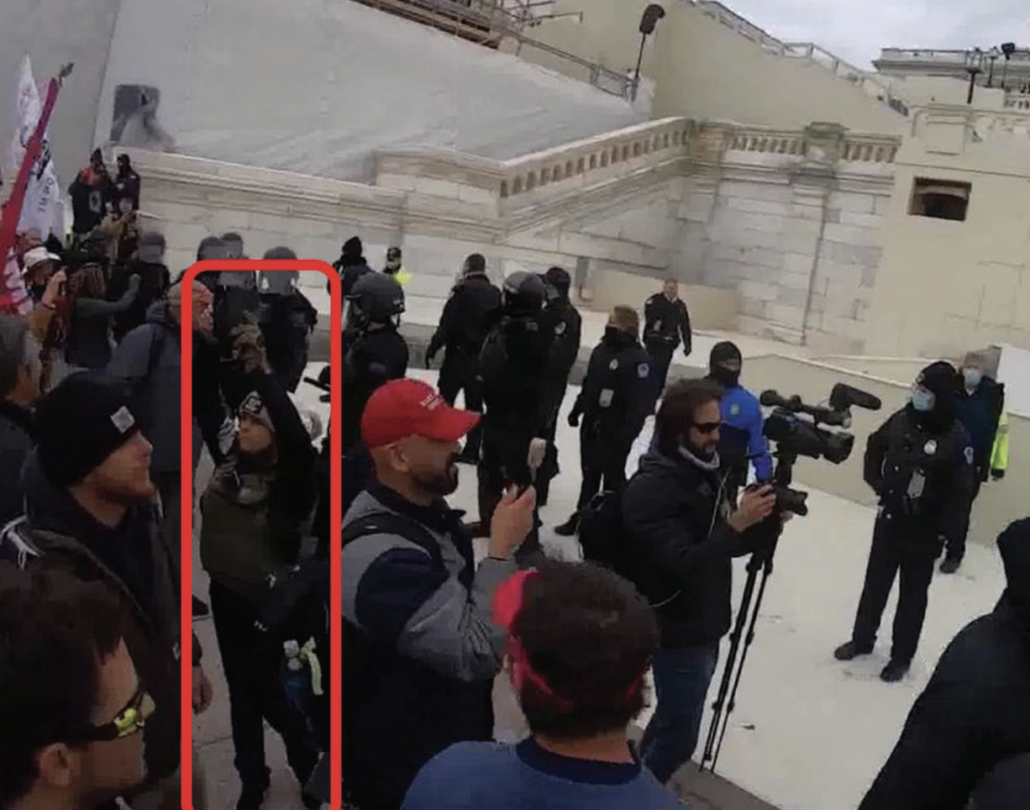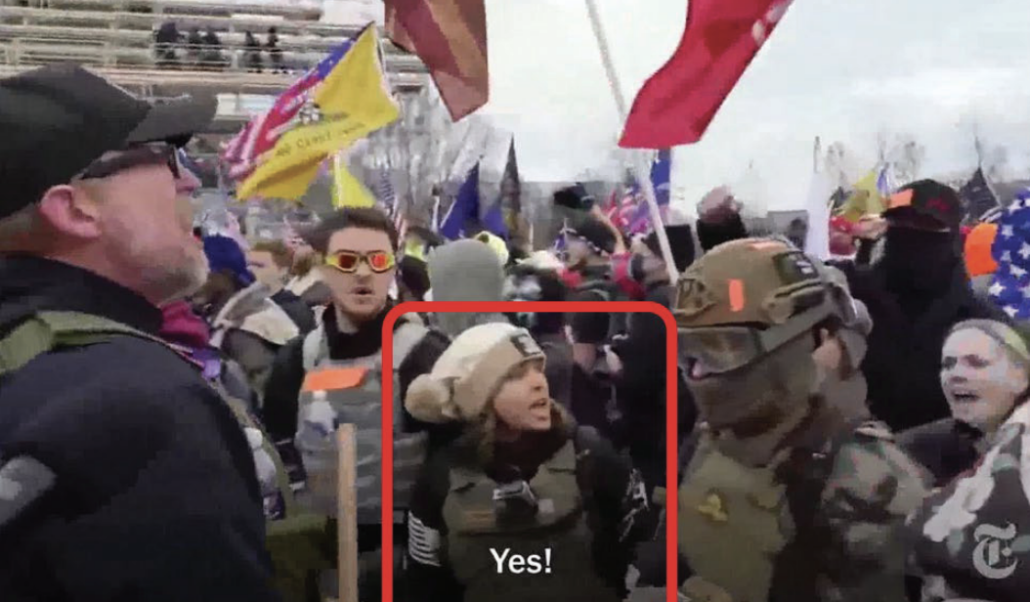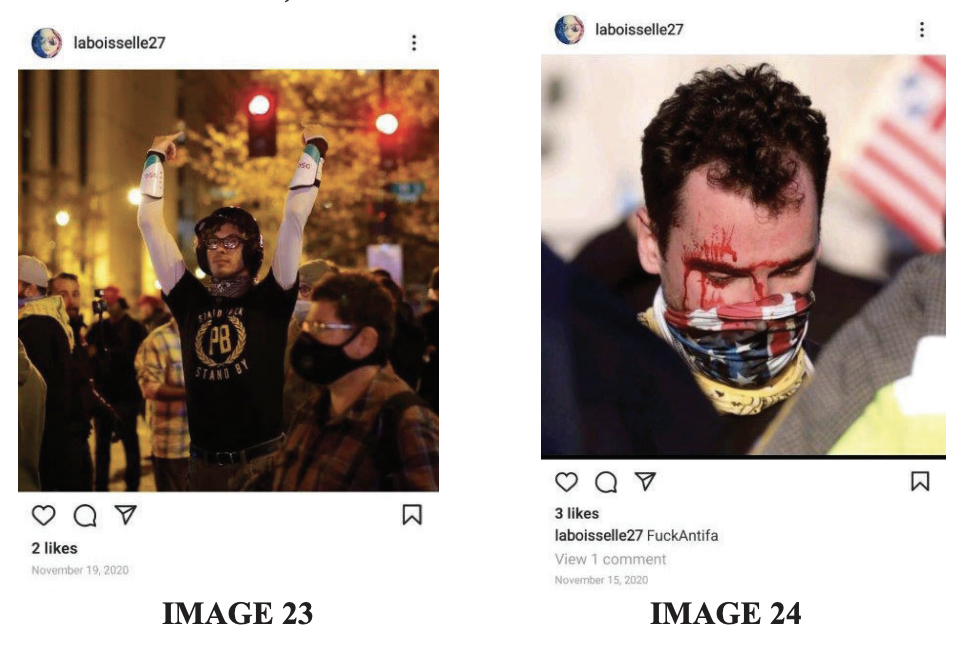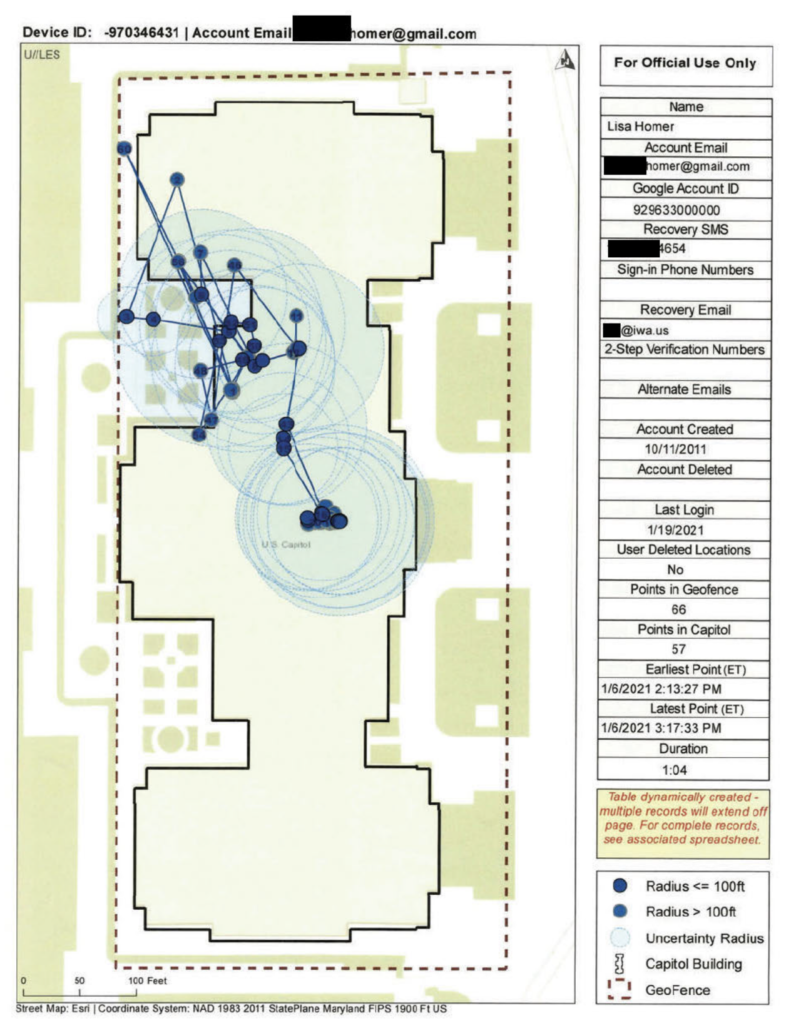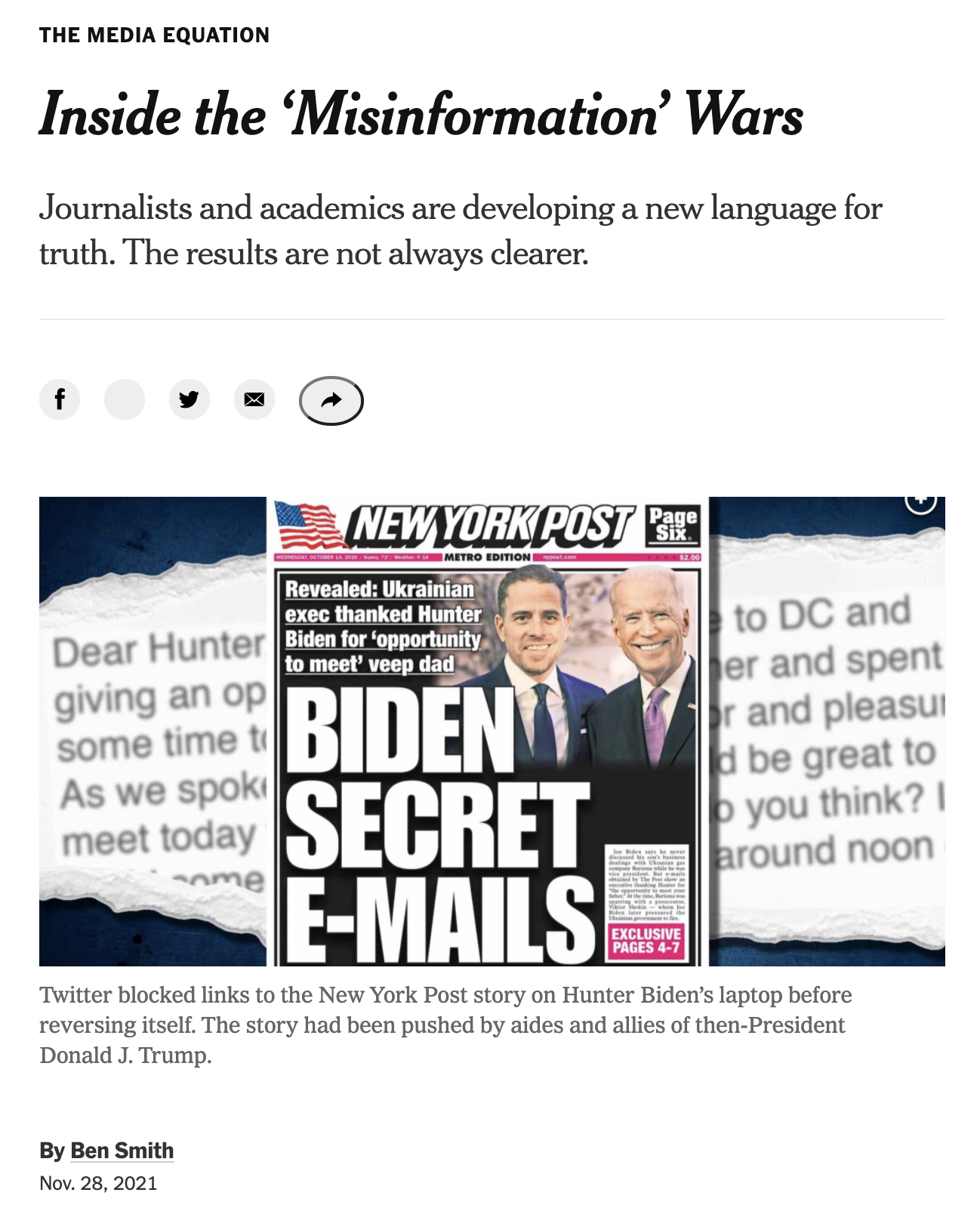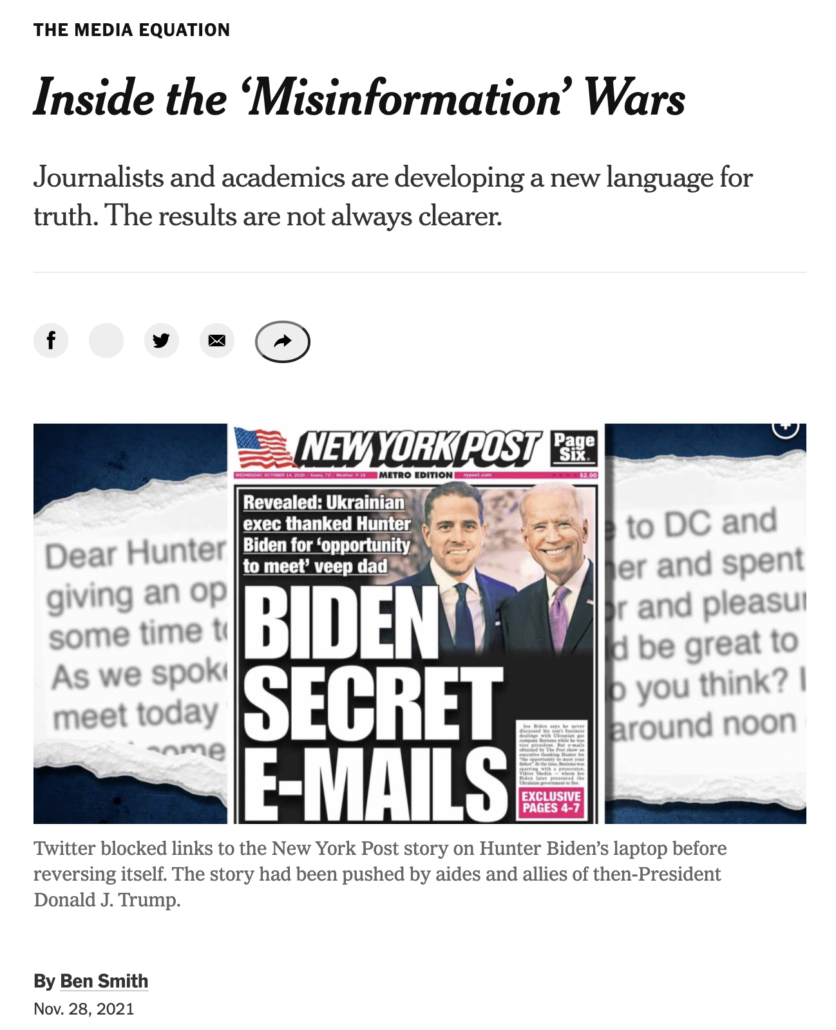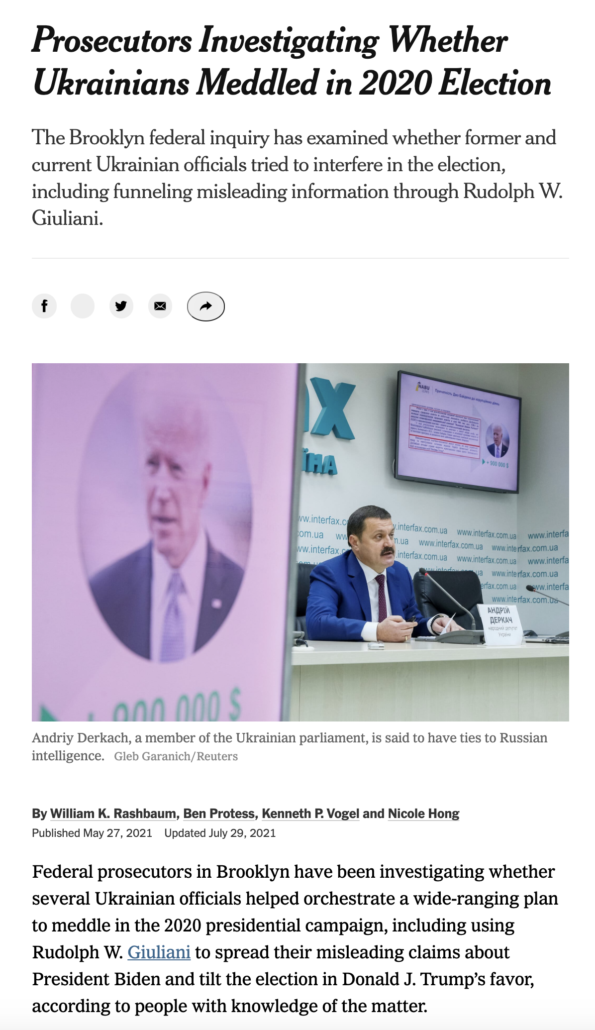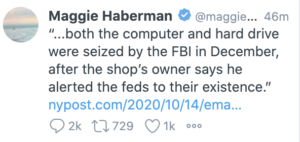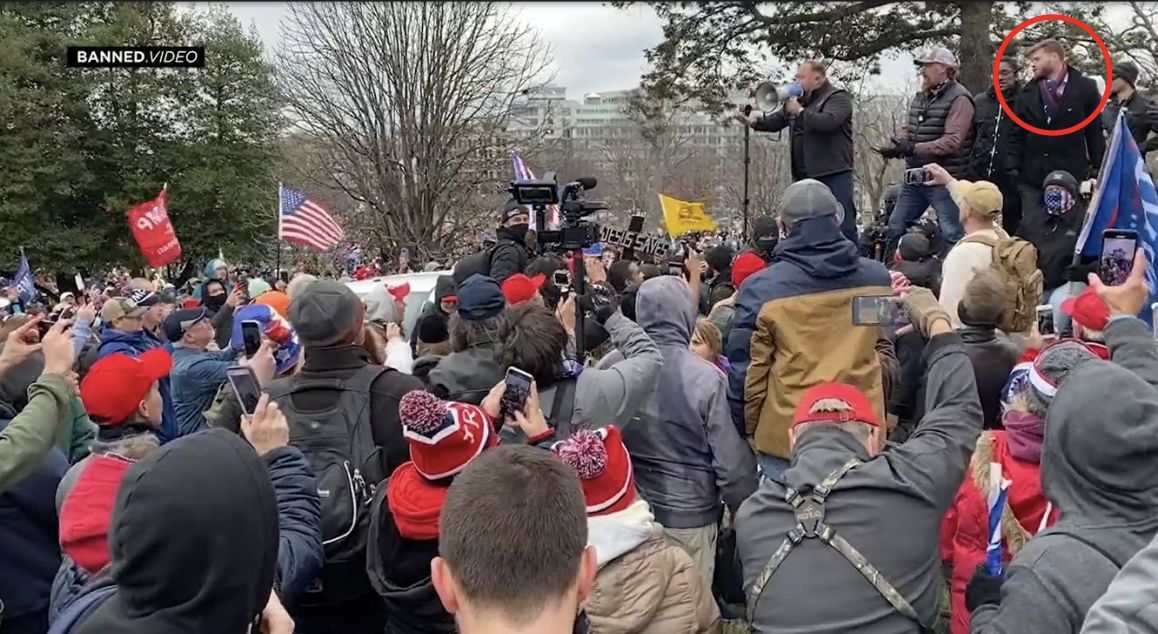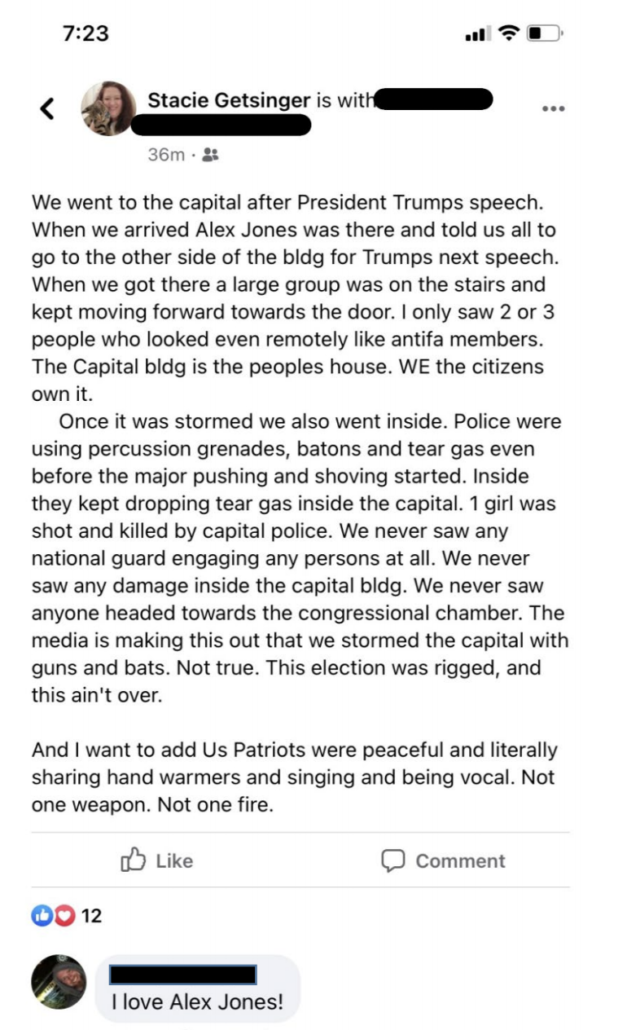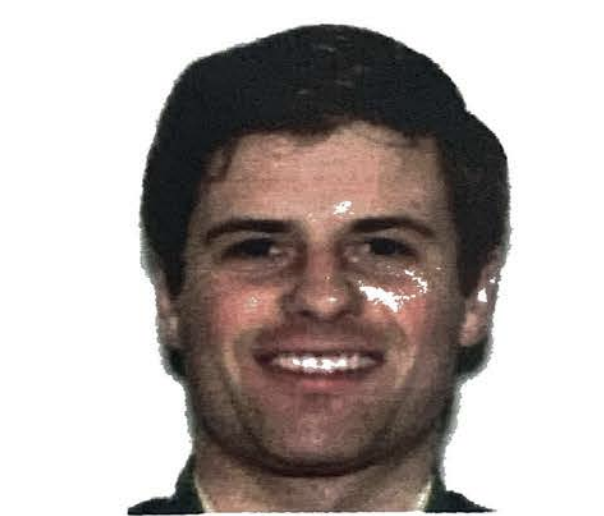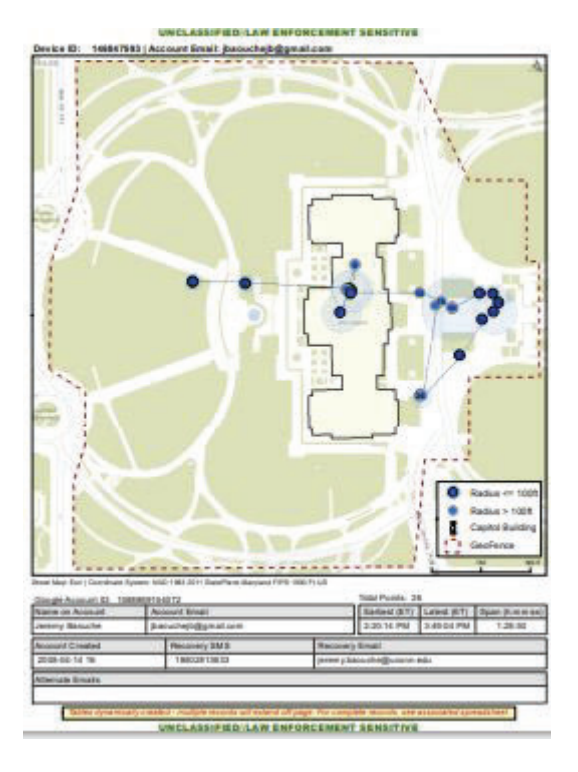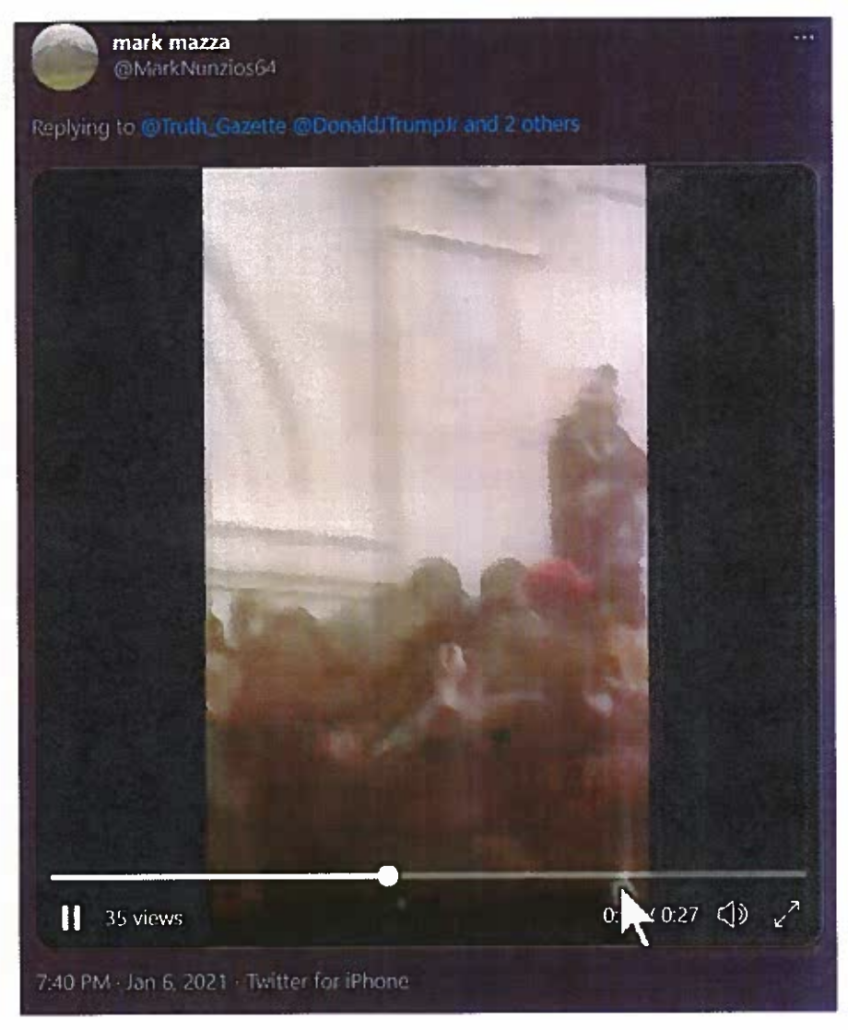John Durham Wants Permission to Delay Providing Evidence of How Weak His Michael Sussmann Case Is
Donald Trump’s insurrectionists may be the only thing that can save John Durham’s indictment of Michael Sussmann.
That’s because Durham seems to think he’ll need to have two extra months over what Sussmann gauges should be necessary, and permission to delay production of Brady materials, to sustain the single false statement charge over Sussmann. As a Sussmann motion to set a trial date submitted yesterday revealed, his team and Durham’s are having a significant disagreement over when the trial should be scheduled. Durham wants four months from now to turn over discovery and wants to schedule the trial for July, whereas Sussmann thinks the trial should be held in May.
Given two exhibits Sussmann included with this motion (and other publicly available documents), it’s easy to see why Durham wants more time.
That’s because Jim Baker has said at least four different things that conflict with the alleged lie that Durham claims Sussmann told in a September 19, 2016 meeting with then-FBI General Counsel Baker:
On or about September 19, 2016, SUSSMANN met with the FBI General Counsel at FBI Headquarters in the District of Columbia to convey the Russian Bank-1 allegations. No one else attended the meeting. During the meeting, the following, in substance and part, occurred:
SUSSMANN stated falsely that he was not acting on behalf of any client, which led the FBI General Counsel to understand that SUSSMANN was conveying the allegations as a good citizen and not as an advocate for any client;
SUSSMANN stated that he had been approached by multiple cyber experts concerning the Russian Bank-1 allegations;
SUSSMANN provided the names of three cyber experts, but did not name or mention Tech Executive-1, the Clinton Campaign, or any other person or company referenced [in Durham’s indictment];
Durham has charged Sussmann with affirmatively lying about representing a client in that meeting.
In an earlier post, I argued that Durham probably hadn’t actually quoted what transpired in this meeting because his sources (meaning Baker, Bill Priestap’s hearsay notes of Baker’s account of the meeting, and some CIA personnel Sussmann met at a later meeting) offered different versions of what Sussmann actually said.
It’s quite possible that Durham has presented these allegations using such squishy language because what little evidence he has doesn’t actually agree on the claimed lies. That is, it may be that Baker believes Sussmann simply didn’t bother explaining which client he was working for, but Bill Priestap, the next in line in a game of telephone, differently understood from Baker’s report that Sussmann affirmatively failed to provide Baker information that (Priestap’s own notes prove) the FBI already had anyway, that he was working with Hillary Clinton.
But it’s far worse than that.
Jim Baker doesn’t agree with Jim Baker about what happened in the meeting. Baker has provided at least four different versions of his understanding of why Sussmann shared the Alfa Bank information with him (I’ve got longer excerpts below). At an October 3, 2018 interview with the Oversight Committee (where Baker brought it up), he said, “I don’t recall [Sussmann] saying that,” he worked for the DNC. At an October 10, 2018 interview with the Oversight Committee, he told Jim Jordan he didn’t “remember [Sussmann] saying that he was acting on behalf of a particular client.” In a July 15, 2019 interview with DOJ IG, Baker explained that Sussmann said their meeting “related to strange interactions that some number of people that were his clients, who were, he described as I recall it, sort of cyber-security experts, had found about some strange connection between some part of Donald Trump’s organizations and Alfa Bank.” In a June 2020 interview with Durham’s team (which as a 302 may be less reliable than the other sources), Baker said, “it did not seem like Sussmann was representing a client. Baker repeated his earlier assertion that he did not know Sussmann was representing the DNC at the time and Sussmann did not advise him of that fact at this particular meeting.” Presumably, Baker testified to the grand jury, too, but that interview would have been after all of these earlier versions. In none of the publicly available versions of Baker’s story does Sussmann affirmatively say he was not representing the DNC or any other client, and in one case — the DOJ IG interview — Baker remembered Sussmann commenting that he had a client; and that version (which Sussmann wouldn’t have had access to before getting it in discovery) matches Sussmann’s public story.
As Sussmann noted in his filing, Durham dumped a whole bunch of discovery on him shortly after the indictment, but it has taken over two months to turn over the conflicting evidence that goes to the core of the alleged false statements.
While the Special Counsel has produced significant discovery since Mr. Sussmann’s Indictment, the Special Counsel has delayed in producing key evidence, which the Special Counsel was required to timely disclose under Brady v. Maryland, 373 U.S. 83 (1963). Indeed, it was only last week—nearly two and a half months after Mr. Sussmann’s indictment, and in the face of persistent demands by Mr. Sussmann’s counsel—that the Special Counsel for the first time disclosed some (but not all) of Mr. Baker’s statements about the September 19, 2016 meeting.1
[snip]
1 Moreover, significant portions of the statements that were disclosed were redacted, an issue which defense counsel has raised with the Special Counsel.
Durham seems intent on similar delays in producing evidence undermining his case. Besides the two month date discrepancy, there are a few subtle but significant differences in their proposed schedules. In the proposed order scheduling order Sussmann has submitted, Durham would be, “under a continuing and ongoing obligation to provide defense counsel any favorable or exculpatory information (Brady), whether or not admissible in evidence, as soon as reasonably possible.” [my emphasis] Durham’s proposed version takes out the words, “as soon as reasonably possible.” Durham, of course, has already violated that part of Sussmann’s proposed scheduling order by sitting on multiple pieces of proof that have been in his and DOJ’s possession for over a year that undermine the claim Sussmann lied.
Durham may suspect the Brady discovery will make this indictment unsustainable. Durham’s more extended schedule would give Sussmann just two weeks after the final deadline for Brady discovery, from March 25 to April 8, to file the motion to dismiss he has already said he’d file. Sussmann’s more condensed schedule nevertheless gives himself three weeks, from January 28 to February 18, to incorporate classified Brady discovery into his motion to dismiss, and over a month, from January 14 to February 18, to incorporate unclassified Brady discovery.
From the start, I noted that this indictment really isn’t about the alleged false statement. Rather, Durham clearly wants to wrap this up into a grand Conspiracy to Defraud the US charge, incorporating Rodney Joffe, the researchers, Fusion GPS, and maybe Christopher Steele.
It’s not just that Durham is working on a theory that Sussmann deliberately dealt garbage to the FBI (which GOP sources also did on the Clinton Foundation) while trying to hide that fact. It’s that data originally sourced from the government was used in doing that research.
It’s actually the kind of argument that DOJ prosecutors typically succeed with. Except it’s all premised on proving that Sussman was trying to hide all this in his meeting with Baker. Even if the evidence surrounding the meeting weren’t so flimsy, this is another degree of motive that Durham is straining mightily to make.
Durham needs Sussmann to have lied, because a deliberate attempt to obscure the rest is necessary for his “storyline.” His evidence that Sussmann lied — much less, deliberately — is shoddy. But if he can’t get that, then his hopes for a larger “narrative” collapse.
So one thing Durham is likely trying to do with his delayed schedule is to buy time to try to make that claim stick. There are already several details that have been made public that show Durham will struggle to make this claim. Durham left out exculpatory details about the researchers in his indictment. The Federalist obtained — but downplayed — evidence that the researchers were not (as Durham insinuated in his indictment) involved with Fusion GPS.
Further, unlike Joffe, who worked hand-in-hand with Sussmann, according to Fusion GPS employee Laura Seago, who had worked on the Alfa project, she was not aware of anyone at Fusion GPS communicating with either [David] Dagon or [Manos] Antonakakis. And while she had heard Dagon’s name before, Seago first came across Antonakakis’s name in a newspaper article.
Antonakakis has not had any contact with Sussman, Marc Elias, or Fusion GPS, his lawyer Mark Schamel told The Federalist. “In this case,” Schamel added, “he reviewed a narrative presented to him by a well-known and respected researcher and provided his feedback, as he does for more than 100 unpublished research articles he receives every year.” Attorneys representing Lorenzen and Dagon did not return requests for comment.
Durham already confessed that he had no evidence Sussmann was working directly with the Hillary campaign on this. Most importantly, all the researchers believed and still believe that the Alfa Bank DNS data showed a real anomaly, and they first discovered it in a legitimate attempt to identify further attempts Russia made to tamper in the 2016 election. If that case were made to the jury, then Sussmann will be able to explain why Baker didn’t apparently think it all that important to ask who Sussmann was representing: because it was an alarming anomaly, no matter who brought it to the FBI.
Still, Durham is likely to get the time he wants. The backlog of trials for incarcerated pre-trial defendants in DC (including 70 or so January 6 defendants) will more likely dictate the trial date for Michael Sussmann than the substance of the dispute between the two of them.
Update: I should have also noted that Beryl Howell’s order tolling Speedy Trial because of COVID protocols will give Durham a way to get out of the 70 day Speedy Trial rule.
October 3, 2018 Oversight/HJC Interview
Mr. Baker. He told — he said that there had been — I’m not sure exactly how they originally learned about that information, but what he told me was that there were cyber — Mr. Meadows. I mean, is he a normal intel operative? How would he have come by this? Mr. Baker. He told me that he had cyber experts that had obtained some information that they thought they should get into the hands of the FBI.
[snip]
[Shen] Okay. So when Mr. Sussman came to you to provide some evidence, you were not specifically aware that he was representing the DNC or the Hillary Clinton campaign at the time? A I don’t recall, I don’t recall him specifically saying that at that time.
[snip]
Q Okay. So I guess it is just my interpretation, but I believe last round it was somewhat implied that if he did have an association to the Democratic National Committee and the Hillary Clinton campaign that that might lead someone to believe that something improper was done. And I wonder if you could just explain to me, you know, why your view is that it was not improper because, just the mere notion that someone who is a Democrat or Republican, you know, comes to you with information, should that information somehow be discounted or considered less credible because of, you know, partisan affiliation? A Well, the FBI is responsible for protecting everybody in this country. Period, full stop. And we do that, without regard to who they are or what their political background is or anything else. If they believe they have evidence of a crime or believe they have been a victim of a crime, we will do what we can within our lawful authorities to protect them. And so when a citizen comes with evidence, we accept it. That is my, just general understanding over many, many years. We, the Bureau, we, the Department of Justice. And so that is how I construed what Michael was doing. It was, he believed he had evidence, again, either of a crime or of a national security threat, and he believed it was appropriate to provide it to us. When he did, I didn’t think there was anything improper about it whatsoever.
[snip]
Mr. Jordan. Okay. Do you know how Sussman got this material? Mr. Baker. What I recall is he told me that there were some cyber experts that somehow would come across this information and brought it somehow to his attention, and that they were alarmed at what it showed, and that, therefore, they wanted to bring it to the attention of the FBI. Mr. Jordan. Did he — Mr. Baker. They and Sussman. Mr. Jordan. They. Any names? Mr. Baker. I don’t think I ever found out who these experts were. Mr. Jordan. Did he indicate that he got this — may have got some of this information from the Democratic National Committee? Mr. Baker. I don’t recall him saying that. Mr. Jordan. Did you know when he was giving this information did you know he was working for — that he did extensive work for the DNC and the Clinton campaign? Mr. Baker. I am not sure what I knew about that at the time. I remember hearing about him in connection — when the bureau was trying to deal with the hack and investigating the hack, that my recollection is that Michael was involved in that process to some degree. I didn’t interact with him on that, so I am not sure if I knew that before this meeting or after, but I don’t recall him specifically saying —
October 18, 2018 Oversight/HJC Interview
Mr. Baker. To the best of my recollection, he told me that it had been obtained by some type of cyber experts, and I don’t know who — how they started their inquiry into this. But that is what he told me, that some certain cyber experts had obtained information about some anomalous looking thing having, to my knowledge, nothing to do with the dossier. But anyway — Mr. Jordan. Did he mention — did Fusion GPS play a role in him getting information that he subsequently gave to you? Mr. Baker. I don’t remember him mentioning Fusion GPS in connection with this material. Mr. Jordan. Did he mention at all when he was talking to you? Mr. Baker. Not to my recollection, no. Mr. Jordan. What about Glenn Simpson? Mr. Baker. Not on this thing, no. Mr. Jordan. How about Christopher Steele? Mr. Baker. No. Mr. Jordan. Okay. Did you meet with anyone else at Perkins Coie relative to this issue, Russia investigation issue?
[snip]
Mr. Baker. Yes, sir. And there was some effort — there was some belief that this was a — being conducted in a way so as to make it a covert communications channel. Mr. Jordan. Okay. And my first question would be how’d you get this? Did you ask that question? Mr. Baker. I did ask that question at a high level, yes. And he explained that he had obtained it from, again, cyber experts who had — who had obtained the information, and he said that the details of it would explain themselves. That’s my recollection. Mr. Jordan. And was he representing a client when he brought this information to you? Or just out of the goodness of his heart, someone gave it to him and he brought it to you? Mr. Baker. In that first interaction, I don’t remember him specifically saying that he was acting on behalf of a particular client. Mr. Jordan. Did you know at the time that he was representing the DNC in the Clinton campaign? Mr. Baker. I can’t remember. I have learned that at some point. I don’t — as I think I said last time, I don’t specifically remember when I learned that. So I don’t know that I had that in my head when he showed up in my office. I just can’t remember. Mr. Jordan. Did you learn that shortly thereafter if you didn’t know it at the time? Mr. Baker. I wish I could give you a better answer. I just don’t remember. Mr. Jordan. I mean, I just find that unbelievable that the guy representing the Clinton campaign, the Democrat National Committee, shows up with information that says we got this, and you don’t ask where he got it, you didn’t know how he got it. But he got it from some, you know, quote, expert. Mr. Baker. Well, if I could respond to that. Mr. Jordan. Sure. Mr. Baker. I mean, so I was uncomfortable with being in the position of having too much factual information conveyed to me, because I’m not an agent. And so I wanted to get this — get the information into the hands of the agents as quickly as possible and let them deal with it. If they wanted to go interview Sussmann and ask him all those kind of questions, fine with me. Mr. Jordan. Did that happen? Mr. Baker. I don’t know that. But I — I mean, I — well, A, I did hand it off to the — to the investigators. Mr. Jordan. I think you told us you handed it off to Mr. Strzok and Mr. Priestap? Mr. Baker. My recollection is Mr. Priestap. Mr. Jordan. Okay. And you don’t know if they followed up or not? Mr. Baker. Bill Priestap told me that they did follow up extensively.
Did you generally have a sense that they represented, that their political law practice had a Democratic clientele?
MR. BAKER: Maybe I should have, but I didn’t really understand it at the time.
MS. TERZAKEN: Is that right?
MR. BAKER: I did not, no.
MS. TERZAKEN: Okay.
MR. BAKER: I came to understand, you know, that, that Perkins-Coie was playing a role with respect to the DNC hack. But the, the extensiveness of their contacts with the Democratic Party, I did not, at the time, have an understanding about, that I recall.
[snip]
MS. TERZAKEN: Okay. With Michael Sussman, your conversations with him before the election, if you could briefly describe how the conversations came about, what information he provided to you.
MR. BAKER: So, I’ll go into the Sussman stuff, yeah, okay. So he came in, he, he, all of this is gone over in the transcript with the committee, so I won’t, I’ll try to just summarize briefly. My basic recollection is, in some way, shape, or form, Michael reached out, and wanted to come in and meet with me. And so we scheduled that. So Michael came in and met with me. And he had some amount of information, physical evidence, printed out, and also a thumb drive or two, that he said related to strange interactions that some number of people that were his clients, who were, he described as I recall it, sort of cyber-security experts, had found about some strange connection between some part of Donald Trump’s organizations and Alfa Bank, which was described as being controlled by the Kremlin. And that it appeared to be the case that this was a, it was, it, it was surmised that this was a back-channel, what do you call it, a back-channel of electronic communications. That, that somehow the Trump organization and Alfa Bank were using this, what looked like a, basically a surreptitious channel to communicate with each other.
June 2020 Durham interview (302)
Sussmann arrived at Baker’s office alone and gave Baker some electronic media and some paper approximately one inch thick. He and Baker met alone in Baker’s office, with no one else present. Sussmann advised Baker that some cyber security researchers had discovered the information and brought it to Sussmann’s attention. The information purported to describe a digital relationship between the Trump organization and Alfa Bank, and Sussmann gave Baker a technical description of that relationship. Sussmann also told Baker he thought it was important for the FBI to have the information. Sussmann also told Baker that the press had the information. Baker said that Sussmann did not specify that he was representing a client regarding the matter, nor did Baker ask him if he was representing a client. Baker said it did not seem like Sussmann was representing a client. Baker repeated his earlier assertion that he did not know Sussmann was representing the DNC at the time and Sussmann did not advise him of that fact at this particular meeting. Baker also said he did not know Sussmann’s firm, Perkins Coie, represented the Hillary Clinton campaign. Baker does not recall Sussmann advising him of the rationale for the cybersecurity researchers bringing the information to him. Additionally, Baker recalls Sussmann telling him that he believed the information was serious and credible. Baker said the meeting with Sussmann lasted approximately 15-20 minutes and he described it as short and cordial. He did not feel there was anything inappropriate about Sussmann meeting with him and providing the information to him.
[snip]
Baker said he could not recall telling Priestap at that time that Sussmann represented the DNC and the Clinton Foundation, but he (Baker) may have known it at the time.

